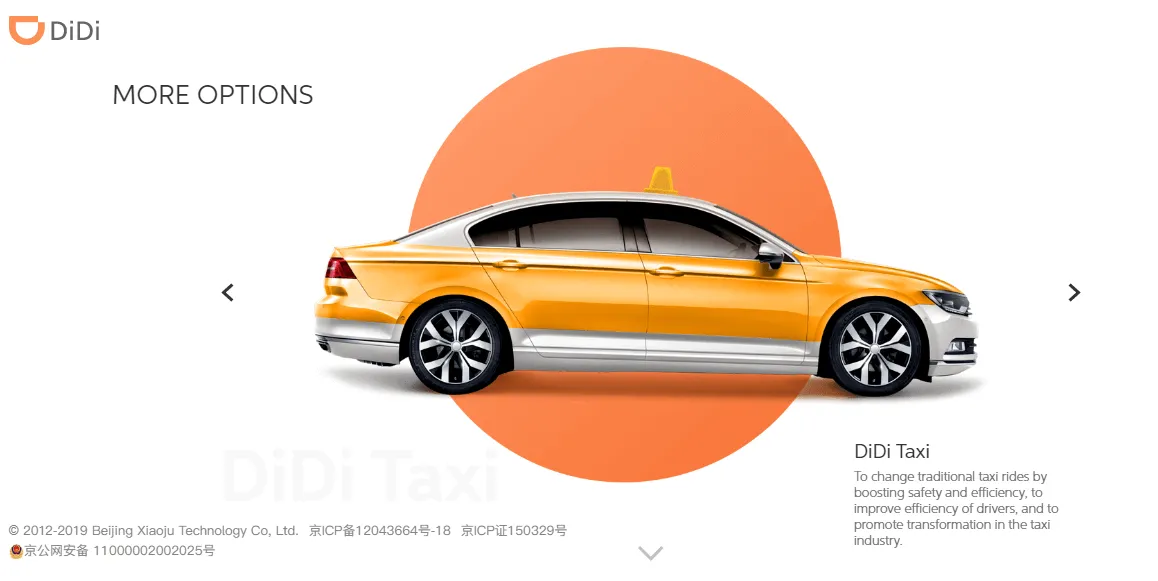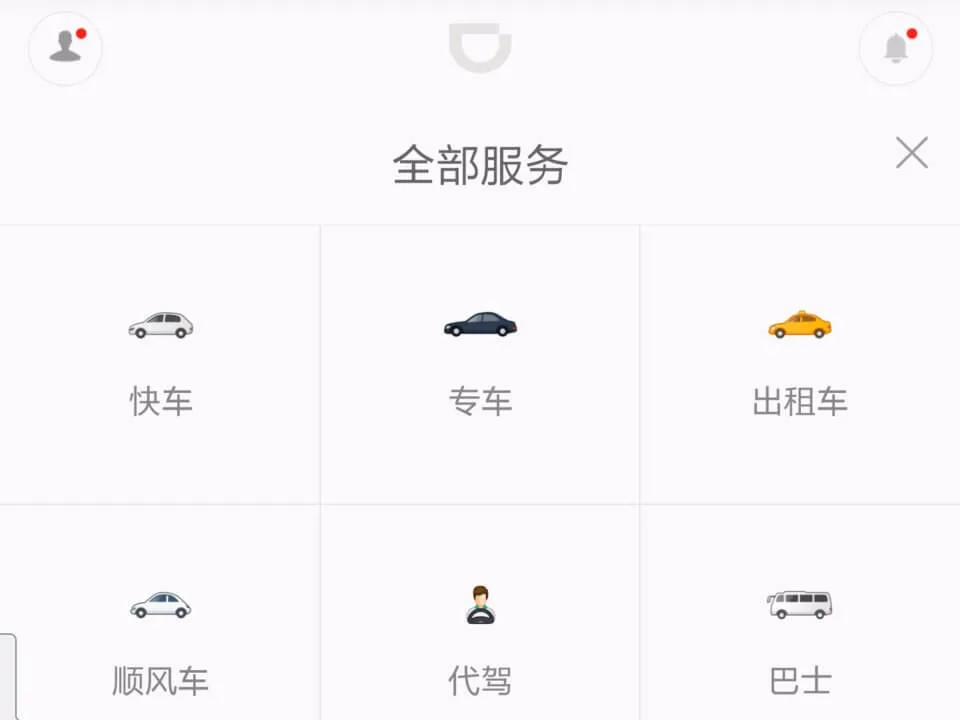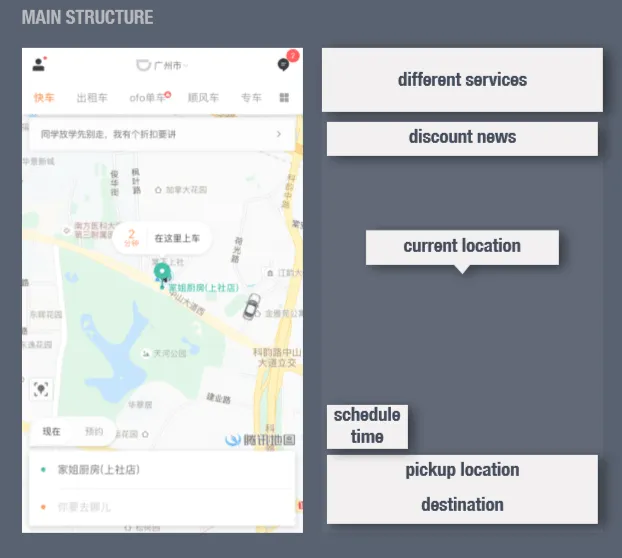Battle of the Ride-Sharing Apps | Why UX Wins Every Time

“When you redesign the transportation system, you basically redesign the whole city … You redefine how people should live.” – Jean Liu, President of DiDi Chuxing
At Userlane, we have a monthly UX meeting where the company is invited to participate in presentations from our product team. Here, we discuss our user personas and take a look at the latest trends and insights on UX, as well as get feedback from other departments on our own product.
During a recent meeting, we discussed DiDi Chuxing – the ride-sharing service that essentially took on Uber in China and won. The company is now looking to conquer the market further, this time globally. Goldman Sachs has estimated that the global ride-hailing industry is expected to grow eightfold to $285bn by 2030, so it’s safe to say that this is an incredibly lucrative market.
But how, exactly, did DiDi manage to win the battle and acquire Uber’s share of the Chinese market? Well, a large part of it comes down to its user experience and the value passengers get out of their numerous services. In fact, Bob Zhang, DiDi’s CTO, says that it plans to expand globally using a four-pronged strategy, one of them being partnerships with domestic players. As Zhang says, “If there are suitable domestic partners, we will empower them to success, be it by using our capital, technology, products or experience.” The key term here is experience, which has been the company’s ability to identify the needs of different passenger groups and listen to and focus on what they want.
To elaborate more on DiDi’s success by focusing on the user experience, we asked KaiPei Feng, our product and UX designer at Userlane, to give us more insight into DiDi and how the company managed to beat Uber China at its own game.

Table of Contents
Revolutionizing the Ride-Sharing Industry: Interview with Userlane UX Expert
Below is the brief interview I had with KaiPei Feng (abbreviated from here on as KF).
TR: Tell me a little bit about why you decided to present DiDi as a case study in our last meeting?
KF: I lived in China for two years – from 2015 to 2017. As a UX designer and as a customer of DiDi myself, I was totally amazed and inspired by what DiDi was doing. During my time in China, DiDi was pushing innovative new features (new services) each month because of fierce competition from Uber. I am unable to give the whole history of the competition between Uber and DiDi in China, but I wanted to share the UX stories of DiDi, which are closely connected to their product strategies.
It’s also important to clarify that the competition between Uber and DiDi is very controversial: Uber blames DiDi for illegal competition and using tactics such as spying or using Tencent for causing technical issues and so on. But nobody actually knows the whole truth. I just wanted to share the stories of what a user has experienced, especially because these stories haven’t been widely spoken about.
TR: How did DiDi listen to their customers/ respond to the market and what their customers needed?
KF: DiDi is very good at creating value by focusing on the needs of different passenger groups – more so than Uber. DiDi recognized that there were customer segments that wanted a simple, no frills ride with a cheaper fare – and this is one of the ways they differed from Uber.
In the beginning, DiDi made sure that, unlike Uber, they provided a wider range of service offerings that catered for nearly all market segments ranging from low-end to high-end. For example, DiDi provides lower-level service classes such as Didi Express and DiDi Taxi, which is actually want the majority of customers want.
Some of the really great services they offer (which Uber didn’t) include:
- The ability to reserve a ride for later (you can even reserve a ride for the next day).
- Ordering a ride for someone else: This is a great service because say, for example, you have grandparents who don’t have a smartphone/ don’t know how all this latest tech works. With DiDi, you can order the ride for them using your own account.
- Switching payment methods, such as switching between private payment and corporate payment. This absolutely makes daily business travel much easier. The old way of doing things was to take a taxi, keep the receipt, and then give it to the finance department. So, you can see how DiDi really tapped into this need to make the payment process both more efficient and easier for customers using the service for both private and business reasons.
- Designated Driving: This service is for those who own cars but would like a chauffeur to drive for them, for whatever reason that may be.
- Premium option: This option offers luxury cars and experienced drivers, and this targets those traveling for business. There are even soft drinks included in these rides!
To elaborate on the Premium option, customers have three categories to choose from after entering their destination, and each category offers a professional driver What’s really cool is that the Premium option also gives quick access to airport services: All DiDi passengers need to do is enter their flight number! The Premium club also offers incentives and services such as vouchers, earning miles, trip planners.
There are so many other services that DiDi offers that I could mention, things such as car pooling services, ride-sharing of buses enabling large companies to transport their employees, having Wi-Fi equipped buses for commuters. I even read recently that some of their Luxe cars are now equipped with air-purifiers. It’s insane what they’re doing!
TR: What feature/ service do you like the most/ think is such a cool idea from DiDi?
KF: How easy the company I worked for at the time could pay for my rides. I loved the fact that I didn’t need to collect any receipts. I just needed to enter a company code, and they matched it with my name and my location automatically.
TR: What can we learn about the UX from DiDi?

KF: The most important thing is to understand your users (both existing users and potential users), what they need, what they might need, and how to create value for them.
In Didi’s case, they managed to win over many customers because:
- They understood the first pain of the passengers: Getting into a stranger’s car is a barrier, so first getting into a taxi is a good entry point.
- They understood that many passengers need a receipt for travelling costs (and that’s why they don’t take the metro).
- They understood the pain point of the senior customers: No smartphone, no mobile payment.
- They also focused on the needs of the middle class: They are less price sensitive and they are willing to pay a lot more in rush hours (in China, rush hour also includes 10 pm, as that’s the time all the shopping malls close). They also understood the needs of students, who want to save money.

The Future of Ride-Sharing Industry and User Experience: A Key Brand Differentiator
DiDi, of course, still faces many challenges. The competition with Uber, as mentioned, has been highly controversial and there is now a new competitor on the market, Meituan-Dianping.
However, despite challenges and setbacks, DiDi continues to revolutionize the ride-sharing industry and has a strong vision for the future. The company is currently working on building new types of cars that will be specifically designed for sharing.
One of the major pain points of passengers in China is the overwhelming volumes of traffic, and that’s why DiDi is currently working with cities in China to fight traffic problems using localized data. The company is also leveraging full use of AI to match riders and drivers each minute, and this predicts where riders are most likely to hail a ride-share service up to 15 minutes ahead of time. They even want to tap into electric and self-driving vehicles, and some of their current service offerings even include having vehicles designed for disabled passengers or passengers with guide dogs.
A large part of DiDi’s success comes down to being able to understand what passengers want, and the most important thing to take away from this article is that DiDi succeeded in China because Uber China simply lacked understanding of what passengers and drivers in China actually wanted. An article in the South China Morning Post discussing DiDi by the numbers indicates that approximately 81% of customers prefer ride-hailing services to taxis in China. And, importantly, many of these customers state that convenience and diversity are the most important factors in the UX.
In short, one key takeaway we can all learn from Didi is that the user experience has an undeniable impact on product adoption, meaning, if you provide the right kind of user experience for your target audience, you can overcome many challenges that you will face in the competitive SaaS market. The customer journey takes all parts of the experience into consideration, which has a huge impact on brand association and brand awareness. Investing in your user experience means you are more likely to meet the high expectations from your customers, as well as defeat your competition.
As Jean Liu, president of Didi Chuxing, once said of rival Uber:
When you have competition, you will learn how to improve yourself. But at the end of the day, the market will pick the best player based on user experience.
If you want to improve your user experience, you need to start with your onboarding emails! Watch the recording of our webinar to optimize your email strategy with SaaS email onboarding strategist, Stephanie Knapp.

